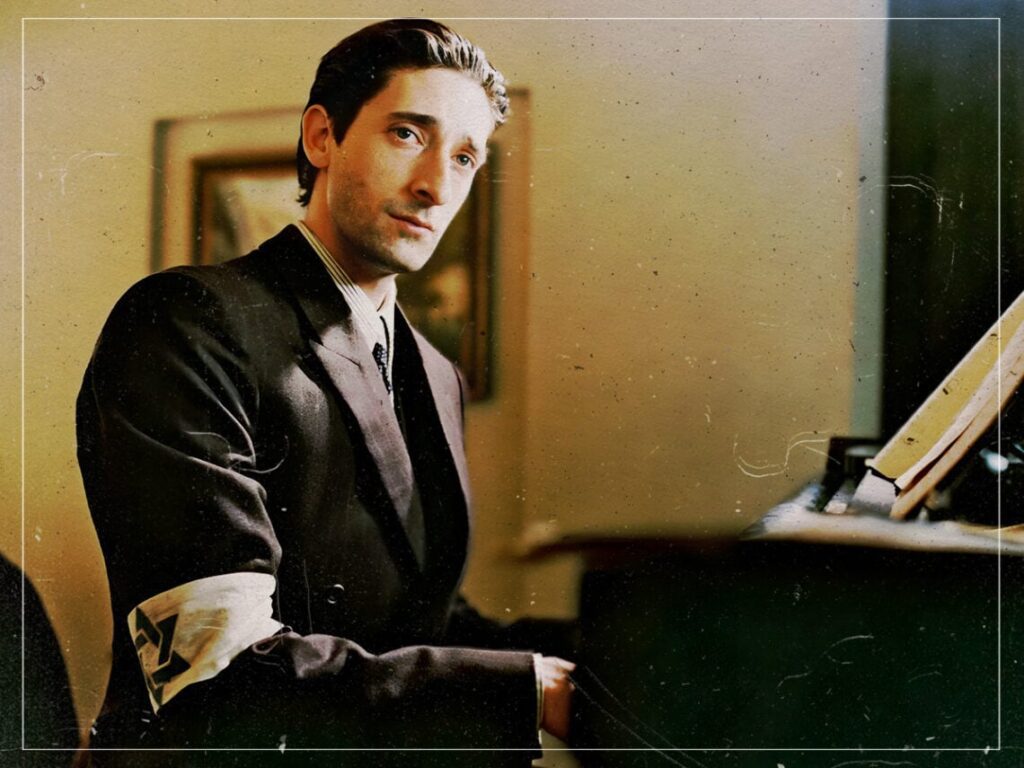‘The Pianist’ ending explained: How does Szpilman survive?
 Posted On
Posted On
(Credits: Far Out / BAC Films)
As a historical epic about the Holocaust, Roman Polanski’s The Pianist follows in the footsteps of Schindler’s List by somehow managing to portray that gruesome moment in history while restoring our faith in humanity. That’s not to say the movie is without controversy, given that it was directed and produced by Polanski during his ongoing exile from the United States, where he’s still due to stand trial for sex crimes against a minor.
The contents of the film itself, though, are a profoundly moving portrayal of the real concert pianist Władysław Szpilman’s experiences in the Second World War. Szpilman was Jewish, and as such, was forced into a Warsaw ghetto after the Nazi German Army invaded his native Poland in 1939. He then narrowly avoided death in an extermination camp before escaping from a concentration camp where he was working as a slave.
He took part in the Warsaw Ghetto Uprising of 1943 and then spent a year fleeing from house to house, surviving jaundice and German flamethrower attacks before finally being found by German Army captain Wilm Hosenfeld.
When Szpilman tells Hosenfeld he’s a pianist, the officer brings him to the piano of the abandoned mansion where the musician is hiding out, and tells him, “Play something”. He’s subsequently brought to tears by Szpilman’s performance and is compelled to go against his military orders and help him.
“Are you hiding here?” Hosenfeld asks. When Szpilman shows him the freezing attic where he’s hiding, Hosenfeld later returns with food for the pianist. He informs him that Russian troops are just across the river and are about to take Warsaw. “All you have to do is wait a few weeks,” he explains.
Hosenfeld comes back to Szpilman again and, this time gives him his military coat to keep him warm. When Szpilman tells him he plans to go back to playing piano on Polish radio after the war is over, Hosenfeld replies, “I’ll listen out for you”.
So, what happens to Hosenfeld?
Szpilman survives thanks to the food and clothing Hosenfeld provided and is finally rescued by Allied troops when they capture the Polish capital. Unfortunately, Hosenfeld never gets to hear him play.
Once Warsaw has fallen to the Red Army, Hosenfeld is kept in a Soviet prisoner-of-war camp, where a Polish violinist sees him without knowing who he is. Hosenfeld begs for Szpilman to be told of his location so he can repay the favour and get him out of the camp. But the violinist never catches his name before a Russian soldier throws Hosenfeld to the ground.
When the violinist brings Szpilman back to the spot where the PoW camp had been set up, there was nothing there. We are told that Hosenfeld “died in a Soviet prisoner-of-war camp in 1952,” having spent the remaining seven years of his life there.
We know now that Szpilman was likely not the only Jewish refugee that Hosenfeld saved. And Szpilman, in turn, tried in vain to have him released from prison in 1950.
This is the tragic part of the movie’s ending. The survival of Szpilman, on the other hand, against all odds, gives us cause to celebrate the actions of both characters.
[embedded content]


